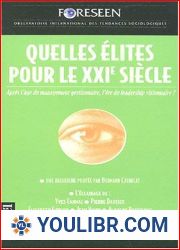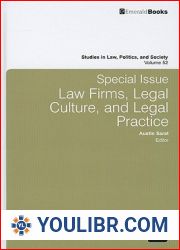
BOOKS - The Politics of Perception and the Aesthetics of Social Change (Columbia Them...

The Politics of Perception and the Aesthetics of Social Change (Columbia Themes in Philosophy, Social Criticism, and the Arts)
Author: Jason Miller
Year: August 31, 2021
Format: PDF
File size: PDF 4.1 MB
Language: English

Year: August 31, 2021
Format: PDF
File size: PDF 4.1 MB
Language: English

The Politics of Perception and the Aesthetetic of Social Change: Columbia Themes in Philosophy, Social Criticism, and the Arts In recent decades, there has been a significant shift in emphasis when it comes to representation in both politics and art. Liberal ideals of universality and individuality have given way to a concern with the visibility and recognition of underrepresented groups. However, Modernist and postmodernist celebrations of disruption and subversion have been challenged by the view that representation is integral to social change. Despite this convergence, neither political nor aesthetic theory has given much attention to the increasingly central role of art in debates and struggles over cultural identity in the public sphere. In his book, "The Politics of Perception and the Aesthetics of Social Change Jason Miller argues that both the aesthetic and political value of art are found in the reflexive self-awareness that artistic representation enables. Art shows us both the particular element in humanity as well as the human element in particularity. Just as Hegel asks us to acknowledge how different historical and cultural contexts produce radically different experiences of art, identity-based art calls on its audiences to situate themselves in relation to perspectives and experiences potentially quite remote or even inaccessible from their own.
Политика восприятия и эстетика социальных изменений: Columbia Themes in Philosophy, Social Criticism, and the Arts В последние десятилетия произошло значительное смещение акцентов, когда речь заходит о представительстве как в политике, так и в искусстве. либеральные идеалы универсальности и индивидуальности уступили место озабоченности видимостью и признанием недопредставленных групп. Однако модернистские и постмодернистские празднования разрушения и подрывной деятельности были оспорены мнением о том, что представительство является неотъемлемой частью социальных изменений. Несмотря на эту конвергенцию, ни политическая, ни эстетическая теория не уделяли много внимания все более центральной роли искусства в дебатах и борьбе за культурную идентичность в общественной сфере. В своей книге «The Politics of Perception and the Aesthetics of Social Change» Джейсон Миллер утверждает, что как эстетическая, так и политическая ценность искусства находятся в рефлексивном самосознании, которое даёт художественное представление. Искусство показывает нам как конкретный элемент в человечестве, так и человеческий элемент в частности. Подобно тому, как Гегель просит нас признать, как различные исторические и культурные контексты производят радикально разные опыты искусства, искусство, основанное на идентичности, призывает свою аудиторию позиционировать себя в отношении перспектив и опытов, потенциально довольно отдаленных или даже недоступных от их собственных.
Politique de perception et esthétique du changement social : s thèmes de Columbia dans la philosophie, le criticisme social et les arts Au cours des dernières décennies, il y a eu un changement important d'accent en matière de représentation politique et artistique. les idéaux libéraux d'universalité et d'individualité ont cédé la place aux préoccupations concernant la visibilité et la reconnaissance des groupes sous-représentés. Cependant, les célébrations modernistes et postmodernistes de la destruction et de la subversion ont été contestées par l'idée que la représentation faisait partie intégrante du changement social. Malgré cette convergence, ni la théorie politique, ni la théorie esthétique n'ont accordé beaucoup d'attention au rôle de plus en plus central de l'art dans le débat et la lutte pour l'identité culturelle dans la sphère publique. Dans son livre The Politics of Perception and the Aesthetics of Social Change, Jason Miller affirme que la valeur esthétique et politique de l'art est dans la conscience de soi réflexe qui donne une représentation artistique. L'art nous montre à la fois un élément particulier dans l'humanité et un élément humain en particulier. Tout comme Hegel nous demande de reconnaître comment les différents contextes historiques et culturels produisent des expériences d'art radicalement différentes, l'art fondé sur l'identité invite son public à se positionner sur des perspectives et des expériences potentiellement assez éloignées, voire inaccessibles, des leurs.
Políticas de Percepción y Estética del Cambio Social: Columbia Temas en Filosofía, Crítica Social, y las Artes En las últimas décadas se ha producido un importante cambio de enfoque a la hora de representar tanto en política como en arte. los ideales liberales de universalidad e individualidad han dado paso a la preocupación por la visibilidad y reconocimiento de los grupos infrarrepresentados. n embargo, las celebraciones modernistas y posmodernas de destrucción y subversión fueron desafiadas por la opinión de que la representación era parte integral del cambio social. A pesar de esta convergencia, ni la teoría política ni la estética prestaron mucha atención al papel cada vez más central del arte en el debate y la lucha por la identidad cultural en la esfera pública. En su libro «The Politics of Perception and the Aesthetics of Social Change», Jason Miller afirma que tanto el valor estético como el valor político del arte están en la autoconciencia reflexiva que da la representación artística. arte nos muestra tanto un elemento concreto en la humanidad como un elemento humano en particular. Así como Hegel nos pide que reconozcamos cómo diversos contextos históricos y culturales producen experiencias de arte radicalmente diferentes, el arte basado en la identidad anima a su público a posicionarse con respecto a perspectivas y experiencias potencialmente bastante distantes o incluso inaccesibles a las suyas.
Política de Percepção e Estética de Mudanças Sociais: Columbia Themes in Philippe, Social Criticismo, and the Arts Nas últimas décadas, houve uma mudança significativa de ênfase quando se trata de representatividade tanto na política quanto nas artes. os ideais liberais de universalidade e individualidade deram lugar à preocupação com a visibilidade e o reconhecimento dos grupos sub-representados. No entanto, as celebrações modernistas e pós-modernas da destruição e da subversão foram contestadas pela opinião de que a representação é parte integrante das mudanças sociais. Apesar desta convergência, nem a teoria política nem a estética deram muita atenção ao papel cada vez mais central da arte no debate e na luta pela identidade cultural na esfera pública. Em seu livro «The Politics of Perceção and the Aesthetics of Social Mudança», Jason Miller afirma que tanto o valor estético quanto político da arte estão na consciência reflexiva que a representação artística oferece. A arte mostra-nos tanto um elemento concreto na humanidade como o elemento humano em particular. Assim como Hegel nos pede para reconhecer como os diferentes contextos históricos e culturais produzem experiências de arte radicalmente diferentes, a arte baseada na identidade convoca o seu público a se posicionar sobre perspectivas e experiências potencialmente remotas ou mesmo inacessíveis às suas próprias.
Politica di percezione e estetica del cambiamento sociale: Columbia Themes in Philadelphia, Social Criticismo, and the Arts Negli ultimi decenni si è verificato un significativo spostamento degli accenti quando si tratta di rappresentanza sia in politica che in arte. gli ideali liberali di universalità e personalità hanno ceduto il posto alla preoccupazione per la visibilità e il riconoscimento dei gruppi sottorappresentati. Ma le celebrazioni moderniste e postmoderne della distruzione e delle attività sovversive sono state contestate dall'opinione che la rappresentanza sia parte integrante del cambiamento sociale. Nonostante questa convergenza, né la teoria politica né quella estetica hanno prestato molta attenzione al ruolo sempre più centrale dell'arte nel dibattito e nella lotta per l'identità culturale nella sfera pubblica. Nel suo libro «The Politics of Percection and the Aesthetics of Social Change», Jason Miller sostiene che sia il valore estetico che politico dell'arte sono in una coscienza riflessiva che offre la rappresentazione artistica. L'arte ci mostra sia un elemento concreto nell'umanità che un elemento umano in particolare. Così come Hegel ci chiede di riconoscere come diversi contesti storici e culturali producano esperienze artistiche radicalmente diverse, l'arte basata sull'identità invita il suo pubblico a posizionarsi in termini di prospettive e sperimentazioni potenzialmente molto distanti o addirittura inaccessibili dalla propria.
Wahrnehmungspolitik und Ästhetik des gesellschaftlichen Wandels: Columbia Themen in Philosophie, Sozialkritik und Kunst In den letzten Jahrzehnten hat sich der Schwerpunkt der Repräsentation sowohl in der Politik als auch in der Kunst stark verschoben. die liberalen Ideale der Universalität und Individualität sind der Beschäftigung mit der chtbarkeit und Anerkennung unterrepräsentierter Gruppen gewichen. Modernistische und postmoderne Feiern der Zerstörung und Subversion wurden jedoch durch die Ansicht in Frage gestellt, dass Repräsentation ein integraler Bestandteil des sozialen Wandels ist. Trotz dieser Konvergenz hat weder die politische noch die ästhetische Theorie der immer zentraleren Rolle der Kunst in der Debatte und im Kampf um kulturelle Identität im öffentlichen Raum viel Aufmerksamkeit geschenkt. In seinem Buch „The Politics of Perception and the Aesthetics of Social Change“ argumentiert Jason Miller, dass sowohl der ästhetische als auch der politische Wert von Kunst in einem reflexiven Selbstbewusstsein liegen, das eine künstlerische Darstellung liefert. Kunst zeigt uns sowohl ein spezifisches Element in der Menschheit als auch ein menschliches Element im Besonderen. So wie Hegel darum bittet, zu erkennen, wie verschiedene historische und kulturelle Kontexte radikal unterschiedliche Kunsterfahrungen hervorbringen, fordert identitätsbasierte Kunst ihr Publikum auf, sich in Bezug auf Perspektiven und Erfahrungen zu positionieren, die möglicherweise ziemlich weit von ihren eigenen entfernt oder sogar unerreichbar sind.
Polityka postrzegania i estetyki przemian społecznych: Kolumbia Tematy filozofii, krytyki społecznej i sztuki W ostatnich dziesięcioleciach nastąpiła znaczna zmiana nacisku, jeśli chodzi o reprezentację zarówno w polityce, jak i w art sposób na zajęcie się widocznością i uznawaniem grup niedostatecznie reprezentowanych. Jednak modernistyczne i postmodernistyczne obchody zakłóceń i wywrotek zostały zakwestionowane przez pogląd, że reprezentacja jest integralną częścią przemian społecznych. Pomimo tej konwergencji, ani teoria polityczna, ani estetyczna nie zwracały dużej uwagi na coraz bardziej centralną rolę sztuki w debacie i walce o tożsamość kulturową w sferze publicznej. W książce The Politics of Perception and the Aesthetics of Social Change (Polityka percepcji i estetyka przemian społecznych) Jason Miller twierdzi, że zarówno estetyczne, jak i polityczne wartości sztuki znajdują się w refleksyjnej samoświadomości, która daje reprezentację artystyczną. Sztuka pokazuje nam zarówno konkretny element ludzkości, jak i w szczególności element ludzki. Podobnie jak Hegel prosi nas o uznanie, jak różne konteksty historyczne i kulturowe tworzą radykalnie różne doświadczenia sztuki, sztuka oparta na tożsamości zachęca swoich odbiorców do pozycjonowania się dla perspektyw i doświadczeń potencjalnie dość odległych, a nawet niedostępnych z ich własnych.
Politics of Perception and Aesthetics of Social Change: Columbia Themes in Philosophy, Social Critical, and the Arts יש שינוי משמעותי בדגש בעשורים האחרונים כשמדובר בייצוג בפוליטיקה ובאמנות קבוצות. עם זאת, חגיגות מודרניסטיות ופוסטמודרניות של הפרעה וחתרנות נקראו תיגר על ידי ההשקפה שייצוג הוא אינטגרלי לשינוי חברתי. למרות התכנסות זו, לא תיאוריה פוליטית ולא אסתטית הקדישו תשומת לב רבה לתפקידה המרכזי ההולך וגובר של האמנות בוויכוח ולמאבק על זהות תרבותית בתחום הציבורי. בספרו The Politics of Perception and the Aesthetics of Social Change (הפוליטיקה של התפיסה והאסתטיקה של שינוי חברתי) טוען ג 'ייסון מילר כי הן הערכים האסתטיים והן הערכים הפוליטיים של האמנות הם במודעות עצמית רפלקטיבית המעניקה ייצוג אמנותי. אמנות מראה לנו את האלמנט הקונקרטי באנושות ואת האלמנט האנושי בפרט. בדיוק כפי שהגל מבקש מאיתנו להכיר בכך שהקשרים היסטוריים ותרבותיים שונים מייצרים חוויות שונות באופן קיצוני של אמנות, אמנות מבוססת זהות מעודדת את הקהל שלה''
Toplumsal Değişimin Algısı ve Estetiği Politikası: Felsefe, Sosyal Eleştiri ve Sanatta Columbia Temaları Son yıllarda hem siyasette hem de sanatta temsil söz konusu olduğunda vurgulamada önemli bir değişim oldu. evrensellik ve bireyselliğin liberal idealleri, yeterince temsil edilmeyen grupların görünürlüğü ve tanınması ile meşgul olmaya yol açmıştır. Bununla birlikte, modernist ve postmodern bozulma ve yıkılma kutlamaları, temsilin toplumsal değişimin ayrılmaz bir parçası olduğu görüşüyle karşı karşıya kalmıştır. Bu yakınlaşmaya rağmen, ne politik ne de estetik teori, kamusal alanda kültürel kimlik tartışmasında ve mücadelesinde sanatın giderek artan merkezi rolüne çok fazla önem vermedi. Jason Miller, The Politics of Perception and the Aesthetics of Social Change (Algı yaseti ve Toplumsal Değişimin Estetiği) adlı kitabında, sanatın hem estetik hem de politik değerlerinin, sanatsal temsil sağlayan yansıtıcı bir öz farkındalık içinde olduğunu savunuyor. Sanat bize hem insanlıktaki somut unsuru hem de özellikle insan unsurunu gösterir. Tıpkı Hegel'in farklı tarihsel ve kültürel bağlamların radikal olarak farklı sanat deneyimleri ürettiğini kabul etmemizi istemesi gibi, kimlik temelli sanat da izleyicilerini kendilerini, kendilerinden oldukça uzak ve hatta erişilemeyen perspektifler ve deneyimler için konumlandırmaya teşvik eder.
سياسة الإدراك وجماليات التغيير الاجتماعي: موضوعات كولومبيا في الفلسفة والنقد الاجتماعي والفنون كان هناك تحول كبير في التركيز في العقود الأخيرة عندما يتعلق الأمر بالتمثيل في كل من السياسة والفنون. أفسحت المثل الليبرالية للعالمية والفردية المجال للانشغال بالظهور والاعتراف المجموعات الممثلة تمثيلا ناقصا. ومع ذلك، فقد تم تحدي الاحتفالات الحداثية وما بعد الحداثة بالاضطراب والتخريب من خلال الرأي القائل بأن التمثيل جزء لا يتجزأ من التغيير الاجتماعي. على الرغم من هذا التقارب، لم تولي النظرية السياسية أو الجمالية اهتمامًا كبيرًا للدور المركزي المتزايد للفن في النقاش والنضال من أجل الهوية الثقافية في المجال العام. في كتابه سياسة الإدراك وجماليات التغيير الاجتماعي، يجادل جيسون ميلر بأن القيم الجمالية والسياسية للفن هي في وعي ذاتي انعكاسي يعطي تمثيلًا فنيًا. يُظهر لنا الفن العنصر الملموس في البشرية والعنصر البشري على وجه الخصوص. تمامًا كما يطلب منا هيجل الاعتراف بكيفية إنتاج السياقات التاريخية والثقافية المختلفة لتجارب فنية مختلفة جذريًا، يشجع الفن القائم على الهوية جمهوره على وضع أنفسهم في وجهات نظر وتجارب يحتمل أن تكون بعيدة جدًا أو حتى يتعذر الوصول إليها من جانبهم.
사회 변화의 인식과 미학의 정치: 철학, 사회 비평 및 예술의 콜롬비아 주제는 최근 수십 년 동안 정치와 예술의 대표성에 중점을 두었습니다. 보편성과 개성의 자유주의 이상은 저조한 그룹의 가시성과 인식으로 선입견하는 방법. 그러나 현대주의와 포스트 모더니즘 축하 행사는 대표가 사회 변화에 없어서는 안된다는 견해에 도전했다. 이러한 수렴에도 불구하고, 정치적, 미학적 이론은 공공 영역에서 문화적 정체성에 대한 논쟁과 투쟁에서 점점 더 중심적인 예술 역할에 많은 관심을 기울이지 않았다. Jason Miller는 자신의 저서 The Politics of Perception과 사회 변화의 미학에서 예술의 미학적, 정치적 가치가 예술적 표현을 제공하는 반영적인 자기 인식에 있다고 주장합니다. 예술은 인류의 구체적인 요소와 특히 인간 요소를 모두 보여줍니다. Hegel이 다른 역사적, 문화적 맥락이 어떻게 근본적으로 다른 예술 경험을 생산하는지 인정하도록 요청하는 것처럼, 정체성 기반 예술은 청중이 잠재적으로 멀리 떨어져 있거나 접근 할 수없는 관점과 경험에 자신을 배치하도록 장려합니다.
社会変革の知覚と美学の政治:コロンビア哲学、社会批評、芸術のテーマここ数十、政治と芸術の両方で表現することに重点を置く重要なシフトがありました。普遍性と個性のリベラルな理想は、可視性と認識を備えた先入観への道を与えました過小評価されています。しかし、モダニズムとポストモダンの混乱と破壊の祭典は、表現が社会の変化に不可欠であるという見解によって挑戦されてきた。このような収束にもかかわらず、政治理論も美学理論も、公的領域における文化的アイデンティティのための議論と闘争における芸術のますます中心的な役割に大きな注意を払わなかった。ジェイソン・ミラーは著書『The Politics of Perception and the Aesthetics of Social Change』において、芸術の美学的価値と政治的価値の両方が、芸術的表現を与える反射的な自己認識にあると論じている。アートは、人間の具体的な要素と特に人間の要素の両方を示しています。ヘーゲルが、異なる歴史的・文化的文脈が根本的に異なる芸術体験を生み出す方法を認めるように求めているのと同じように、アイデンティティベースの芸術は、聴衆が自分自身から非常に遠く離れている可能性がある、あるいはアクセスできない可能性のある視点や経験を自分自身に置くことを奨励しています。
社會變革的感知政治和美學:哲學,社會批評和藝術中的哥倫比亞主題近幾十來在政治和藝術中的代表性方面發生了重大的重點轉移。普遍性和個性的自由理想讓位於對代表性不足群體的能見度和承認的關切。但是,現代主義和後現代主義的破壞和顛覆慶祝活動受到以下觀點的質疑:代表制是社會變革的組成部分。盡管有這種融合,但政治和美學理論都沒有太多關註藝術在辯論中的日益核心作用以及在公共領域爭取文化認同的鬥爭。傑森·米勒(Jason Miller)在其著作《感知政治和社會變革的聲學》中指出,藝術的美學和政治價值都在於藝術表現的反思性自我意識。藝術向我們展示了人類中的特定元素,尤其是人類元素。正如黑格爾要求我們認識到不同的歷史和文化背景如何產生截然不同的藝術經驗一樣,基於身份的藝術鼓勵他的聽眾將自己定位在可能與自己相距甚遠甚至無法獲得的觀點和經驗上。







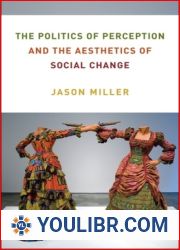



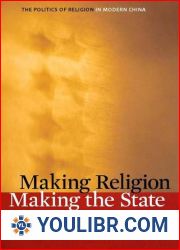
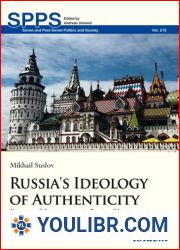

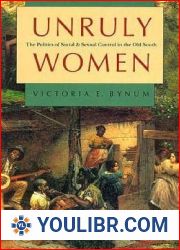
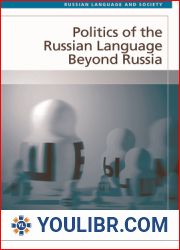

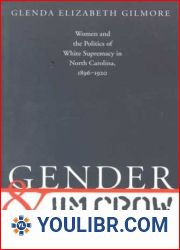

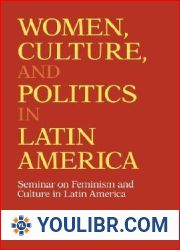





![Global Hiv AIDS Politics, Policy, and Activism: Persistent Challenges and Emerging Issues [3 Volumes]: Persistent Challenges and Emerging Issues Global Hiv AIDS Politics, Policy, and Activism: Persistent Challenges and Emerging Issues [3 Volumes]: Persistent Challenges and Emerging Issues](https://youlibr.com/img/6/671936_oc.jpg)


